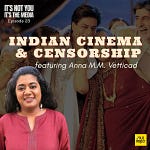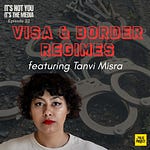This episode delves into the media's problematic portrayal of children, particularly in conflict zones. The episode asks: who gets to be a “child” in mainstream media? The coverage of children over the years reveals two broad themes: 1) the process of “un-childing” and 2) tendency towards saviorism that can produce troubling representations of children’s bodies, especially girls. It addresses how language and representation shape perceptions of childhood, the impact of state policies on Black, brown, and Muslim children, as well as, the contradictions in society's view of innocence. The conversation also highlights the role of the media in normalizing violence against children and maintaining a savior complex that often accompanies humanitarian narratives in non-white and conflict-zone countries. Ultimately, it emphasizes the need for hope and resilience in the face of despair.
Keywords: Journalism, media ethics, reporting, headlines, propaganda, narratives, children, Palestine, minority discrimination in the US, race and religious discrimination, representation, genocide, saviorism, white-saviorism, un-childing, police violence, childhood, activism, humanitarianism
Key Takeaways:
The media plays a significant role in shaping perceptions of childhood.
Legal manipulation of language legitimizes comes first and enables the media to justify violence against children.
Palestinian children have historically been dehumanized in media coverage.
The US has waged totalizing war against children seen in their coverage of police killings of Black youth and in their child services systems.
The concept of 'un-childing' reflects a broader societal issue.
State policies disproportionately affect non-white children.
The basis of colonialism and the existence of the empire is in deliberately targeting family structures that are not deemed conventional or appropriate for them, examples are, removing children from parents, destroying indigenous family structures, etc.
There is a contradiction in society's view of childhood innocence.
The notion of “genocide” in Palestine is debated in the media but analyzing the deliberate killing of children precisely proves this.
Visuals of suffering children can evoke sympathy but also desensitize audiences.
Saviorism in humanitarian efforts can perpetuate colonial narratives.
Hope and resilience are essential in the fight for justice.
Resistance to totalizing logic of Palestinian annihilation and erasure is necessary.
References:
Incarcerated Childhood and the Politics of Unchilding by N. Shalhoub-Kevorkian
UN experts deeply concerned over ‘scholasticide’ in Gaza: OHCHR
Black Disparities in Youth Incarceration by The Sentencing Project
Slacktivism by Oxford English Dictionary
Clicktivism by Oxford English Dictionary
Guidelines for ethical reporting on children in conflict: International Journalists’ Network
A Hierarchy of Innocence: The Media's Use of Children in the Telling of International News by Susan Moeller
The War on Children, 2018 report by Save The Children
The rise of the digital saviour: can Facebook likes change the world? By Bhakti Shringarpure
Boy with a Mustard Shirt by Suchitra Vijayan
The Status of Palestinian Children During the Uprising in the Occupied Territories by Anne Elisabeth Nixon and Swedish Save the Children












